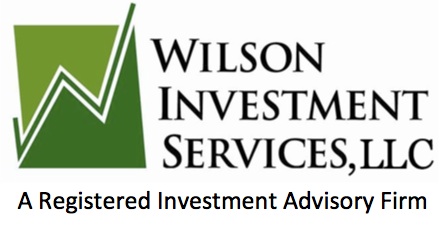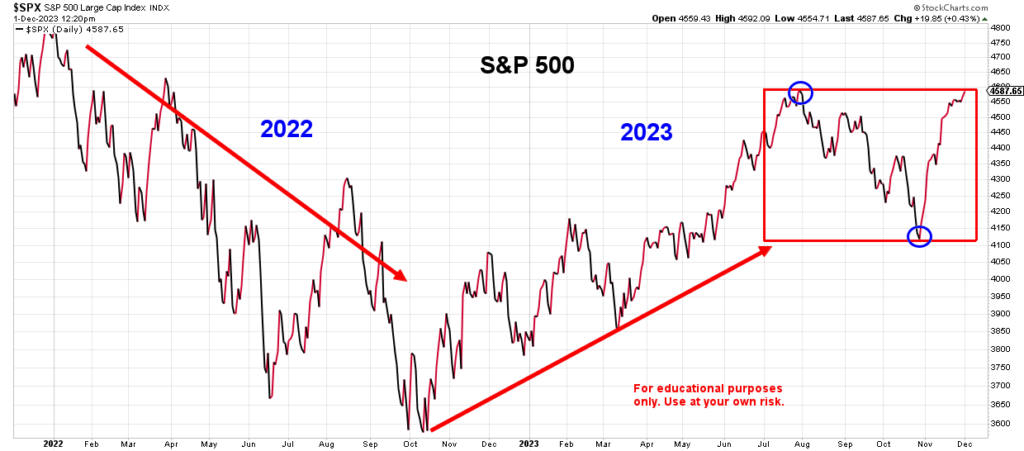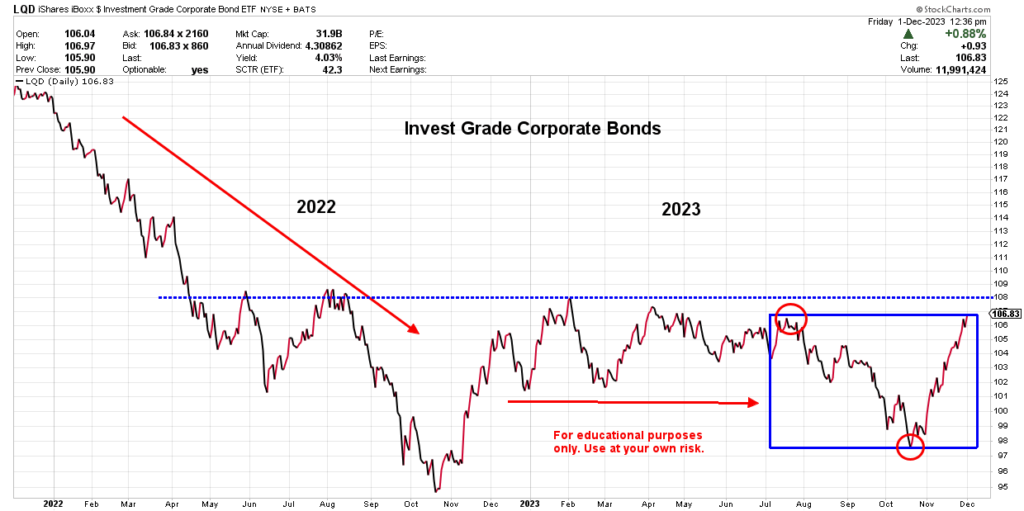November Shines
November was an incredible month for the stock market! The Dow Jones, S&P 500, and Nasdaq all posted their best month for 2023. The S&P 500 and Nasdaq also had their best month since July 2022. Call it seasonal rotation or the Santa Claus effect, but the gift the markets are anticipating is that the Fed is not only done raising interest rates but could also cut rates soon.
This week, the Fed’s favorite economic gauges indicated that inflation had continued to slow and consumer demand is dropping. Combine that with the latest jobs report that came out earlier in November that showed an uptick in unemployment, and this has convinced Wall Street that not only will rates stay where they are, but that the Fed will likely begin to cut rates by May or June of 2024.
Looking Forward
The current circumstances we find ourselves in offers a great example of how the stock market looks forward and reacts. Below is a two-year chart of the S&P 500 that illustrates the bottom of the downtrend in October of 2022 and its rise to its current position in 2023. Inside the box on the right side of the chart we see the three-month short-term correction starting in August 2023 and down through the end of October. At the end of October, the markets began to think the rate hikes would not only stop, but began anticipating rate cuts next year. This has pushed up the S&P 500 price to the August 2023 high.
The short-term three-month correction in August was created when the Fed indicated that they see more “upside risk” to inflation which could lead to more rate hikes. Up until that point the markets were expecting rate hikes to end and rate cuts to start.
Bonds Too
Now let’s take a look at the bond market. As I have written before, bond prices have an inverse relationship with interest rates—meaning when one goes up the other goes down. Most bonds are also considered to be a relatively conservative investment, and the majority of investors hold some percentage of bonds in their portfolios to offset the higher risk equities they own. But in 2022 we witnessed a rarely seen scenario where both stock and bond prices both decreased significantly as interest rates rose. Below is a two-year chart of corporate bonds that shows the slide in bond prices in 2022 and the sideways movement in 2023.
The blue box on the right side shows the price of corporate bonds in November moved higher for the same reasons stocks moved higher—they both anticipating rate cuts. Since June of 2022, this particular ETF has met resistance every time it rises to $108/share, so I’ll be keeping an eye on any breakout above that price.
Election Year 2024
As we move into 2024, the good news is that even though consumer prices are still a lot higher than they were two-three years ago, inflation seems to be slowing, and interest rates may start coming down again. Also, the stock market has bounced off its 2022 lows nicely, and we are watching to see if it makes new highs in 2024. Since 2024 is an election year, the political and financial media will overreact and generate fear in order to find as many viewers and readers as possible. They do this to sell their ad time, so don’t get pulled into the hysteria. As always, stay calm and patient, and look for opportunities.
________________________________
This post is for informational purposes only. It is not intended as investment advice as each person’s financial situation is different. I strongly recommend working with a financial advisor who can deliver current information to you quickly and offer help with sorting through the various investing options. Bret Wilson is a Financial Advisor with Wilson Investment Services, based in Rockwall, Texas.



Recent Comments